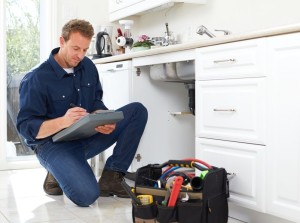 Are you buying your first home? Congratulations on this important milestone. While buying a home is exciting, it is essential to remember there are certain prerequisites to purchasing a new home.
Are you buying your first home? Congratulations on this important milestone. While buying a home is exciting, it is essential to remember there are certain prerequisites to purchasing a new home.
A home inspection can reveal hidden issues, giving you a complete picture of your investment. You want to know about the home’s hidden problems before you make a down payment on your new home. Keep reading to learn more about how these inspections work and why they’re so important!
Mortgage lender and insurance requirements
The mortgage lender has a vested interest in the home’s condition and may ask you to get a home inspection. If the pest control or home inspection highlights structural defects, you may request the seller repair the property or negotiate a lower price. In addition, your home insurance company may require a home inspection before purchasing homeowners insurance.
Who pays for the home inspection?
According to Zillow, the inspection cost is the buyer’s responsibility if they decide to have it done before making the purchase. The cost of the inspection falls on the seller if they choose to have it done to address any problems before advertising their house for sale. The inspection price is never added to the mortgage or the closing costs; instead, it is always paid directly to the qualified inspector of your choice.
Items on the home inspection list
A home inspection can reveal potential problems before you buy your home. According to Realtor.com, here are some of the important items a home inspection may consist of:
- Foundation and Structure: Is the home’s foundation sturdy? The inspector will check that the sides, doors, and window frames are straight. Knowing foundation problems when purchasing an older home is vital, as foundation repairs can be costly.
- Electrical Inspection: Light switches, air conditioning, and heating systems, as well as the number and placement of electrical outlets in each room, will all be part of the electrical inspection.
- Roof: Ceiling drips and leaks in crawl spaces are indicators of problems with the roof, so inspectors check for faulty shingles and other sources of moisture in the attic. The inspector will also examine the gutters, chimneys, and skylights to see if there are any hidden issues.
- Plumbing: Pipes, drains, water heaters, water pressure, and temperature are all checked by inspectors, and they may be indicators of water damage or other plumbing problems.
- Exterior: A home inspection looks for cracks or decay in siding, wood exterior, and brickwork. The inspector checks the vinyl siding to see if it is bowed. On wood exteriors, the inspector will look for flaking paint and clearance between the exterior siding and the foundation to prevent moisture damage.
What if the home inspection reveals problems?
If a home inspection reveals deficiencies, it doesn’t necessarily mean you shouldn’t buy the house, only that you will know in advance what to expect. With the home inspection report in hand, you will have the tools you need to negotiate a lower purchase price which will help you pay for any required repairs.
A home inspection can give you peace of mind if you’re ready to buy your first home. Let us take the worry out of the home inspection process. Contact us to schedule your consultation!

